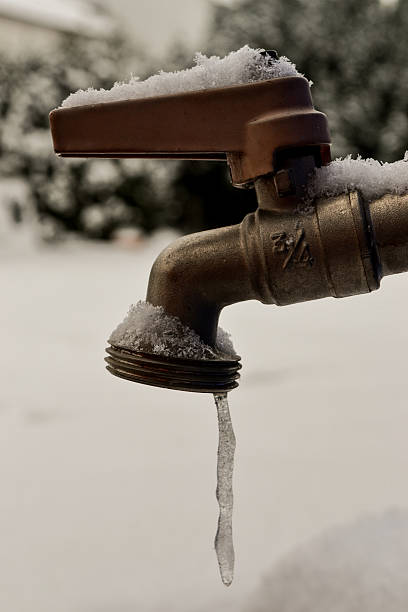Important Tips for Avoiding Frozen Pipes in Winter Conditions
Important Tips for Avoiding Frozen Pipes in Winter Conditions
Blog Article
Everybody seems to have their own individual perception on the subject of Winter Plumbing Precautions: Preventing Frozen Pipes.

Winter can damage your pipes, particularly by freezing pipes. Right here's just how to prevent it from occurring and what to do if it does.
Introduction
As temperature levels decrease, the risk of frozen pipelines boosts, potentially leading to costly fixings and water damage. Comprehending just how to prevent frozen pipelines is vital for home owners in cold environments.
Recognizing Icy Pipes
What triggers pipelines to freeze?
Pipelines freeze when revealed to temperatures listed below 32 ° F (0 ° C) for prolonged durations. As water inside the pipelines ices up, it increases, taxing the pipe walls and potentially triggering them to break.
Risks and problems
Icy pipelines can bring about water system interruptions, home damage, and pricey repair services. Ruptured pipelines can flood homes and trigger comprehensive architectural damage.
Indicators of Frozen Pipes
Determining icy pipelines early can prevent them from rupturing.
Exactly how to recognize icy pipelines
Look for decreased water flow from faucets, unusual odors or noises from pipes, and visible frost on exposed pipes.
Prevention Tips
Insulating susceptible pipes
Wrap pipes in insulation sleeves or use heat tape to protect them from freezing temperatures. Concentrate on pipelines in unheated or external areas of the home.
Heating techniques
Maintain indoor rooms properly heated, specifically locations with plumbing. Open up cabinet doors to permit cozy air to circulate around pipes under sinks.
Protecting Exterior Plumbing
Yard hose pipes and exterior faucets
Disconnect and drain pipes yard hose pipes prior to winter season. Mount frost-proof spigots or cover outside taps with protected caps.
What to Do If Your Pipelines Freeze
Immediate activities to take
If you presume icy pipes, keep faucets open up to alleviate pressure as the ice thaws. Make use of a hairdryer or towels soaked in hot water to thaw pipes gradually.
Long-Term Solutions
Architectural changes
Take into consideration rerouting pipelines away from outside walls or unheated locations. Include extra insulation to attic rooms, cellars, and crawl spaces.
Updating insulation
Buy high-quality insulation for pipes, attic rooms, and wall surfaces. Correct insulation assists preserve consistent temperatures and decreases the risk of icy pipelines.
Final thought
Stopping frozen pipelines needs positive measures and quick responses. By understanding the causes, indications, and preventive measures, property owners can shield their pipes during winter.
6 Proven Ways to Prevent Frozen Pipes and Protect Your Home
Disconnect and Drain Garden Hoses
Before winter arrives, start by disconnecting your garden hoses and draining any remaining water. Close the shut-off valves that supply outdoor hose bibs and leave the outdoor faucet open to allow any residual water to drain. For extra protection, consider using faucet covers throughout the colder months. It’s also important to drain water from any sprinkler supply lines following the manufacturer’s directions.
Insulate Exposed Pipes
Insulating your pipes is an effective way to prevent freezing. Pipe insulation is readily available at home improvement stores and is relatively inexpensive. Pay close attention to pipes in unheated areas such as the attic, basement, crawl spaces, or garage. Apply foam insulation generously to create a buffer against the cold. You can also wrap your pipes in heat tape or thermostat-controlled heat cables for added warmth.
Seal Air Leaks
Inspect your home for any cracks or openings that could let in cold air. Seal any holes around the piping in interior or exterior walls, as well as the sill plates where your home rests on its foundation. Additionally, make sure to keep your garage door closed unless you’re entering or exiting. Leaving it open creates a significant air leak that can lead to frozen pipes.
Allow Warm Air Circulation
During cold snaps, it’s essential to allow warm air to circulate evenly throughout your home. Leave interior doors ajar to promote better airflow. Open kitchen and bathroom cabinets to help distribute heat consistently around the rooms. If you have small children or pets, be sure to remove any household chemicals or potentially harmful cleaners from open cabinets for safety.
Let Faucets Drip
A small trickle of water can make a big difference in preventing ice formation inside your pipes. When temperatures drop significantly, start a drip of water from all faucets served by exposed pipes. This continuous flow helps prevent the water from freezing. Additionally, running a few faucets slightly can relieve pressure inside the pipes, reducing the chances of a rupture if the water inside does freeze.
https://choateshvac.com/6-proven-ways-to-prevent-frozen-pipes-and-protect-your-home/

As a serious reader on How to prepare your home plumbing for winter weather, I imagined sharing that excerpt was smart. Do you know someone else who is inquisitive about How to prepare your home plumbing for winter weather? Please feel free to promote it. I take joy in reading our article about Winter Plumbing Precautions: Preventing Frozen Pipes.
Call Today Report this page